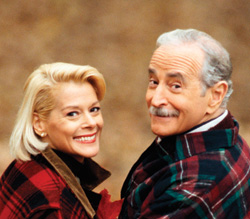Toward an Aging-Friendly Era

A national expert sheds light on how communities will need to adapt to an aging generation of baby boomers.
Between 1946 and 1964, 76 million babies were born, creating a population bulge that has transformed our society ever since. With the oldest baby boomers now in their mid-60s and the rest nearing retirement, they are once again changing the fabric of our world.
“Retirement continues to evolve,” says David Baxter, senior vice president at Age Wave, a San Francisco-based consulting company. “People [once] retired for five, maybe 10 years, and retirement was usually a time of rest and relaxation… What we’re seeing in our work is that people are increasingly looking not just to rest and relax or wind things up in retirement, but for continuing engagement.”
Since the beginning of the 20th century, average life expectancy in the U.S. has increased from 47 to 78, meaning that today’s seniors will likely spend 20 to 30 more years in retirement—and in better health—than previous generations. However, this shift also calls for great changes in how communities care for their senior populations.
Slightly more than 13 percent of the City of Peoria’s population is comprised of those 65 and older, just a shade higher than the national average of 12 percent. With a rapidly aging population, Peoria will have to evolve into what Baxter calls an aging-friendly community, something he says can be achieved by making advancements in six categories: healthcare, housing, transportation, employment, physical environment and participation.
Among the needed improvements, Baxter suggests, are the following:
- A shift of focus from acute medical conditions, which afflict mostly younger populations, to chronic ones. Aging populations suffer from long-term diseases like osteoporosis and diabetes, and will require better wellness programs and coordination of care going forward.
- Access to more affordable and accessible housing. In addition to more retirement communities and assisted living facilities, houses without many obstacles, such as stairs or high shelving, will be needed, as well as technology allowing for remote medical care.
- More reliable transportation will be required, especially for rural residents, so seniors can have access to their healthcare providers, family and friends.
- More programs that connect employers and retirees will be needed. Whether to fund a longer retirement or for socializing, older adults are interested in working on a part-time or cyclical basis.
- Creation of better ways for seniors to get around. As the world is built mostly for younger people, overall accessibility to everything will have to be reconsidered.
- More ways to engage the aging population. To promote a healthier and more fulfilling retirement, older adults will need activities or volunteer programs that allow them to keep them connected to their community.
“I think continuing engagement is kind of the new keyword for retirement,” Baxter says. “I think [Peoria is] doing a lot of things right,” referencing the city’s healthcare system and affordable housing as ways Peoria has already moved toward becoming an aging-friendly community.
Baxter will hold a brainstorming session with members of the community and give the keynote address at ICC’s “Building an Aging Friendly Community” workshop on Friday, October 12th. Baby boomers, organizations and businesses that serve seniors, and local government officials are all encouraged to attend to learn more about what this next stage of life means for the Peoria area and its older citizens. iBi
Register online at icc.edu/acp or call (309) 690-6900. To learn more about David Baxter and Age Wave, visit agewave.com.

